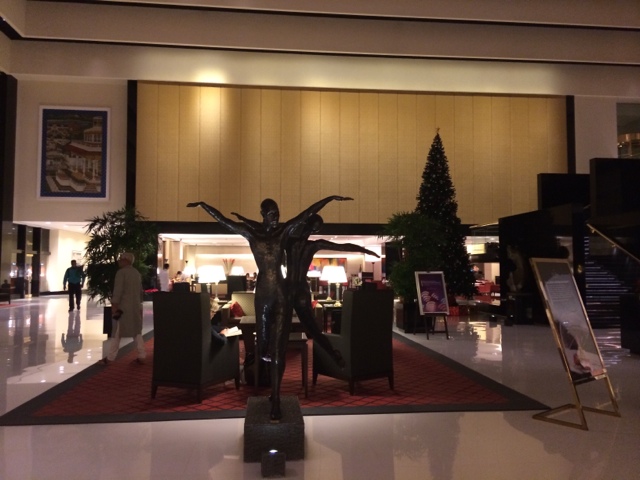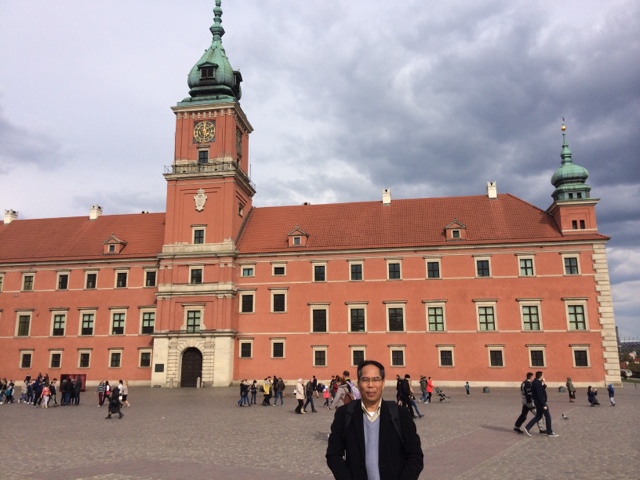Your Travelling, Vacation, Shopping and Leisure Guide To The Best Sights, Destinations and Bargains Worldwide
Tuesday, December 13, 2016
My first trip to Mumbai
Monday, December 12, 2016
Vivanta Taj Hotel
This palace-styled hotel, set amidst five acres of landscaped gardens, offers spacious comfort and rich, hospitable service. Vivanta by Taj – Aurangabad is a gateway to World Heritage Sites such as the Ajanta and Ellora caves and is conveniently located just 9 kilometres away from the airport and railway station.
A choice of accommodation, business facilities, banqueting facilities, dining options and unique Vivanta motifs makes it one of the best 5-star hotels in Aurangabad.
Find stylish, authentic experiences around every corner. Welcome to picture perfect elegance and royal grandeur. Connectivity is easy here, in a space where business meets leisure. Come for business. Stay for pleasure. On a weekend getaway or for a swift mid-week trip. However long or short your stay is, you will be spoilt for choice at Vivanta by Taj – Aurangabad.
Step into fantastic accommodation to get a taste of luxury.
The best hotel in Mumbai
The Oberoi, Mumbai enjoys an unrivalled position on the exclusive Marine Drive, with unparalleled views of the ocean and the Queen's Necklace; a golden crescent of lights that adorns the shoreline after dark.
The centrepiece of our luxury hotel in Mumbai is the atrium lobby, abundant with natural light that flows through the tremendous skylight and large floor-to-ceiling windows. Tiled in flawless white Thassos marble and featuring a contemporary, black granite waterbody, all rooms, restaurants and spa facilities revolve around and branch off this focal point. In the midst of it all, a stylish, red piano occupies centrestage.
Saturday, December 10, 2016
Mumbai (/mʊmˈbaɪ/; also known as Bombay,
Trident, Nariman Point Mumbai
The Oberoi and Trident are two brands of five star hotels operated and sometimes owned by the Oberoi Hotels & Resorts located in several cities in India and across the world. When located together in a single complex, they are collectively called Oberoi Trident.
Oberoi Hotels & Resorts and Trident Hotels at Mumbai are located atNariman Point and are separately known as The Oberoi Mumbai andTrident, Nariman Point. They are both owned and managed by the Oberoi Hotels & Resorts. The two hotels are separate buildings, but are connected by a passage.
The hotels were initially known as Oberoi Towers/Oberoi Sheraton. The hotel was named as the Hilton Towers during the marketing alliance betweenHilton Hotels and the Oberoi Hotels & Resorts which lasted from 2004 until April 2008. In April 2008, the hotel was again renamed to Trident Towers.[1]
The Hotel rate is between 150 to 200 USD.Sunday, May 8, 2016
The Orangutan
Sunday, May 1, 2016
The Lanzienki Royal Park
Łazienki Park (Polish: Park Łazienkowski or Łazienki Królewskie, literally "Baths Park" or "Royal Baths"; often rendered "Royal Baths Park") is the largest park in Warsaw, Poland, occupying 76 hectares of the city center.
The park-and-palace complex lies in Warsaw's central district (Śródmieście), on Ujazdów Avenue (Aleje Ujazdowskie) on the "Royal Route" linking the Royal Castle with Wilanów palace to the south. North of Łazienki Park, on the other side of Agrykola Street, standsUjazdów Castle.
Music for Everyone Frederick Chopin
Saturday, April 30, 2016
The Warsaw Old Town
The Warsaw Old Town (Polish: Stare Miasto, and collectively with the New Town, known colloquially as: Starówka) is the oldest part of the capital city. It is bounded by the Wybrzeże Gdańskie, along with the bank of Vistula river,Grodzka, Mostowa and PodwaleStreets. It is one of the most prominent tourist attractions in Warsaw.
The heart of the area is the Old Town Market Place, rich in restaurants, cafés and shops. Surrounding streets feature medieval architecture such as the city walls, the Barbican and St. John's Cathedral.





















































